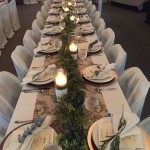How To Decorate Your Nails At Home
Decorating nails at home offers a cost-effective and creative outlet for personal expression. With the right tools and techniques, one can achieve salon-quality results in the comfort of their own home. This guide outlines the necessary steps and provides helpful tips for a successful at-home manicure.
Essential Tools and Materials:
Before beginning, gathering the necessary tools and materials is crucial. These include nail polish remover, cotton pads, nail clippers, a nail file, a buffer block, cuticle pusher and nipper (optional), base coat, colored nail polish, top coat, and any desired decorative elements such as glitter, rhinestones, or striping tape.
Preparing the Nails:
Nail preparation forms the foundation of a long-lasting and aesthetically pleasing manicure. First, any existing nail polish should be removed thoroughly with nail polish remover. Next, nails should be clipped and filed to the desired shape. Common shapes include oval, round, square, almond, and stiletto. A buffer block can then be used to smooth the nail surface and create an even canvas for polish application. Gently pushing back the cuticles with a cuticle pusher or orangewood stick helps to create a neat and tidy appearance. Cuticle nippers can be used to trim excess cuticles, but caution should be exercised to avoid cutting the skin.
Applying Base Coat:
A base coat serves several important functions. It protects the nails from staining, strengthens the nails, and helps the colored polish adhere better. Applying a thin, even layer of base coat is recommended, allowing it to dry completely before proceeding to the next step.
Applying Colored Polish:
Colored polish application requires a steady hand and proper technique. The bottle should be rolled between the palms to mix the polish without creating air bubbles. Starting at the base of the nail, near the cuticle, apply the polish in thin, even strokes towards the tip. Two coats are generally sufficient for opaque coverage, allowing each coat to dry thoroughly before applying the next.
Adding Decorative Elements (Optional):
This stage offers a wide range of creative possibilities. Glitter can be applied over wet polish or sprinkled onto a sticky top coat. Rhinestones can be affixed with nail glue or embedded in wet polish. Striping tape can be used to create geometric designs or accentuate certain areas of the nail. The possibilities are limited only by one's imagination.
Applying Top Coat:
The top coat seals the design and provides a glossy finish, protecting the manicure from chipping and extending its lifespan. A thin, even layer of top coat should be applied, ensuring it covers the entire nail, including the tips, to prevent premature wear. Allowing the top coat to dry completely is crucial for a smooth and durable finish.
Clean-up and Maintenance:
Inevitably, some polish may stray onto the skin surrounding the nails. A small brush dipped in nail polish remover can be used to carefully clean up any smudges or spills. Regular moisturizing of the cuticles and hands helps to maintain healthy nails and prevent dryness. Reapplying top coat every few days can extend the life of the manicure and maintain its shine.
Exploring Different Techniques:
Beyond basic polish application, numerous techniques can be explored to create unique and intricate nail designs. These include:
Ombre Nails: This technique involves blending two or more colors together to create a gradient effect.
Water Marbling: This technique uses water and various nail polish colors to create swirling patterns.
Stamping: This technique utilizes pre-designed plates and a stamper to transfer intricate patterns onto the nails.
Freehand Nail Art: This technique involves using fine brushes and various tools to create custom designs directly on the nails.
Experimenting with Colors and Textures:
The vast array of nail polish colors and finishes available provides endless opportunities for creative expression. From classic solid colors to shimmering metallics, glittery finishes, and textured effects, individuals can experiment with different combinations to find what suits their personal style. Considering seasonal trends or incorporating favorite colors into nail designs can add a personalized touch.
Practicing and Patience:
Achieving professional-looking results takes practice and patience. Starting with simpler designs and gradually progressing to more complex techniques is recommended. Watching online tutorials or seeking inspiration from nail art communities can provide valuable guidance and motivation.
How To Do Your Own Nails I Started And What S Use

6 Ways To Do Nail Art Wikihow

10 Best And Easy Nail Art Designs To Try At Home In 2025

Easy Nail Art Designs Diy Projects Craft Ideas How To S For Home Decor With Panda

6 Ways To Do Nail Art Wikihow
How To Do Your Own Nails I Started And What S Use
:max_bytes(150000):strip_icc()/natural-nails-6f22b285d88a416d9bf0582489a6de82.jpg?strip=all)
11 Cute Natural Nail Designs That Prove Less Is More

112 Insanely Good Nail Art Ideas To Try At Your Next Appointment

Latest Diy Ideas For Nails Art And Decor Design Summer In 2025 Nail Designs

How To Do Acrylic Nails At Home For Beginners Diy Easy Affordable Tutorial Nail Art Ideas 2025







